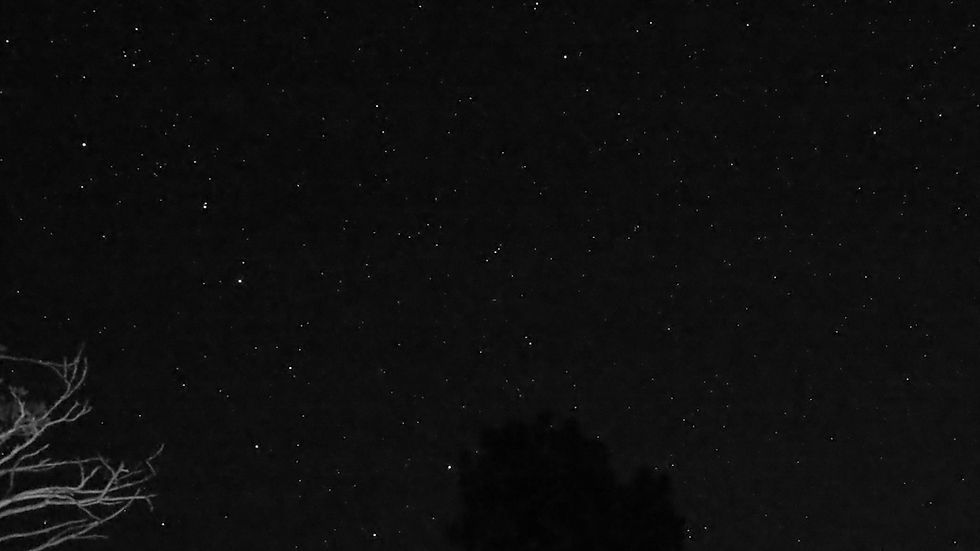✨ Ursa Major and Ursa Minor under the Utah Sky ✨
- Abbas Mokhtarzadeh

- Aug 5
- 3 min read
Updated: Oct 6
✨ Ursa Major and Ursa Minor under the Utah Sky ✨
Captured during a breathtaking night at Bryce Canyon National Park during ALCON2025, this photo beautifully frames two iconic constellations: Ursa Major and Ursa Minor, with the North Star, Polaris, shining steadily at the tip of the Little Bear’s tail.
The dark skies of Bryce offered an unforgettable canvas. Ancient stories written in starlight came to life. From the Big Dipper guiding the way to Polaris, to the deep cultural and scientific meanings behind these constellations, the experience was both humbling and inspiring.
The Beauty of Mizar and Alcor
One of the most captivating features in this photo is the star pair Mizar and Alcor. Located in the handle of the Big Dipper, they are part of the constellation Ursa Major. For centuries, these stars have intrigued skywatchers. They were even used as a simple eyesight test. If you could see both stars clearly with the naked eye, it meant your vision was sharp.
The name Mizar means "girdle" or "belt" in Arabic, while Alcor means "the faint one" because it appears dimmer next to Mizar.
A Complex Star System
What looks like just two stars to the naked eye is actually a much more complex system. Mizar and Alcor together form a decuple star system, meaning ten stars bound together by gravity!
Here’s how it breaks down:
Mizar itself is not just one star but eight estimated visually detectable stars in this system.
Alcor is a binary star, meaning it has two stars orbiting each other closely.
These stars are about 81 to 83 light-years away from Earth. They are separated by roughly 0.2 light-years, about 13,000 times the distance between the Earth and the Sun. They slowly orbit each other over millions of years, forming a grand stellar family.
This is one of my favorite binary star systems. It serves as a constant reminder of the beauty and wonder of the night sky whenever I look up. Mizar and Alcor have stayed with me through the years, inspiring curiosity and awe every time I see them.
Exploring Stellar Data
To find detailed data about these stars, astronomers and citizen scientists use the WDS catalogue. The WDS is maintained at the United States Naval Observatory (USNO). Its database originated at Lick Observatory, where it was used to create the Index Catalog of Visual Double Stars (IDS), published in 1963. In 1965, the database was transferred to the Naval Observatory under the direction of Charles Worley.
Stelle Doppie is a searchable database that brings together information about double and multiple stars from various astronomical catalogs, most notably the Washington Double Star Catalog (WDS). Stelle Doppie, which means "Double Stars" in Italian, is a valuable resource for star enthusiasts. You can explore Mizar and Alcor here:
Mizar on Stelle Doppie: Mizar on Stelle Doppie
Alcor on Stelle Doppie: Alcor on Stelle Doppie
Historical Significance
Historically, Mizar was cataloged by the ancient Egyptian astronomer Ptolemy in the 2nd century CE. However, due to observational limits, Alcor wasn’t separately noted until centuries later. The Persian astronomer PurOmar Sufi, known in the West as Azophi, first described Alcor in his 10th-century book and atlas, Static Constellations (also called The Book of Fixed Stars). This work was a major reform and extension of Ptolemy’s Almagest.
Azophi’s atlas included detailed descriptions of several nebulous or “The Little Cloudy” celestial objects, such as:
The Pleiades star cluster (M45)
The Praesepe cluster (M44) in Cancer
The Orion Nebula (M42) in Orion’s sword
The Andromeda Galaxy (M31)
These were among the earliest recorded observations of fuzzy star clusters and nebulae. Centuries later, we understood them to be vast collections of stars and galaxies.
In recognition of Azophi’s valuable contributions to astronomy, several lunar craters have been named after him. The main crater Azophi is approximately 47 km in diameter and is accompanied by nine satellite craters, including the notable Azophi A, which is about 22 km across. These features, varying in size, are officially catalogued by the USGS Gazetteer of Planetary Nomenclature:
Azophi crater: Azophi crater
Azophi A crater: Azophi A crater
The Connection Between Past and Present
This stellar pair is a beautiful example of how the night sky connects us to ancient science and modern discovery. It serves as a reminder that every point of light holds a story.
As we gaze at the stars, we are reminded of the countless generations who have looked up in wonder. The night sky is a shared heritage, a canvas of dreams and discoveries.
🌌 A perfect moment blending astronomy, nature, and community.
Stargazing BinaryStars UrsaMajor MizarAndAlcor AstronomyHistory Azophi NightSky CelestialWonders StarClusters Nebulae SpaceScience SIMBADDatabase AncientAstronomy UrsaMinor Polaris BryceCanyon ALCON2025 DarkSkyPark CitizenScience AstronomyOutreach MilkyWayMoments IAUCoNOCUSA NasaSolarSystemAmbassador AstronomyForAll LookingUpAstro

Camera used: Canon R DSLR on Tripod, timing = 15 to 20 seconds shot.



Comments